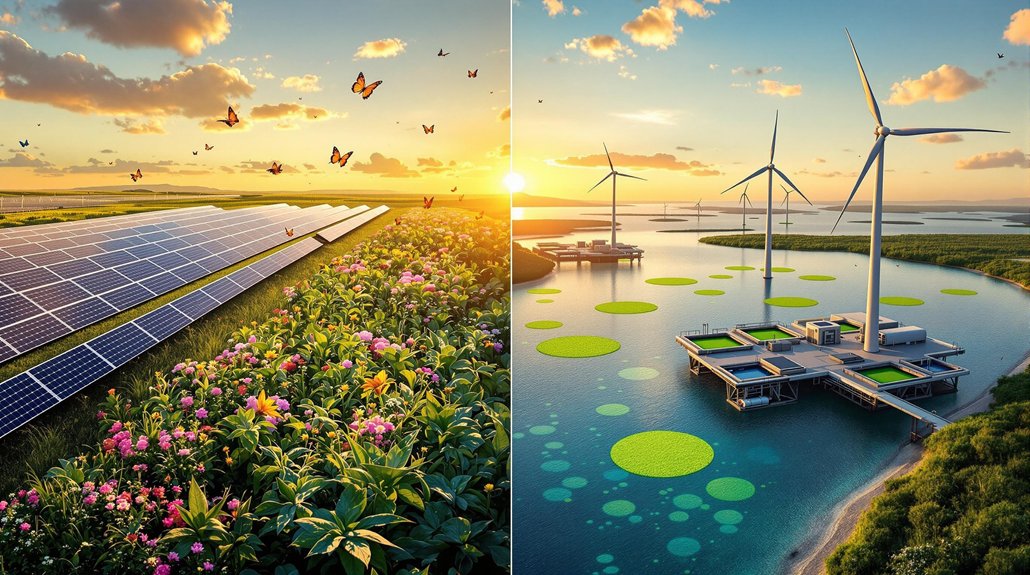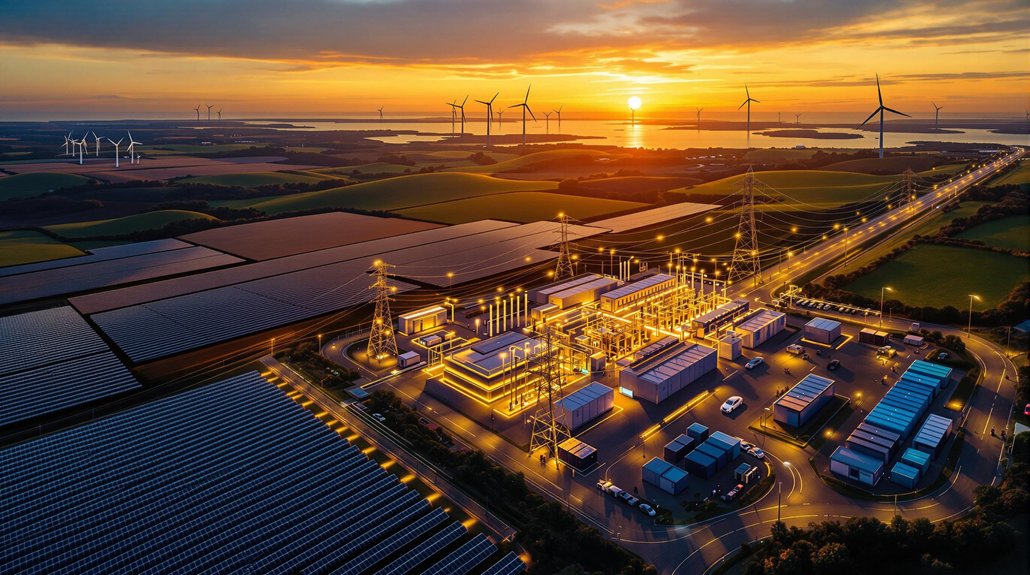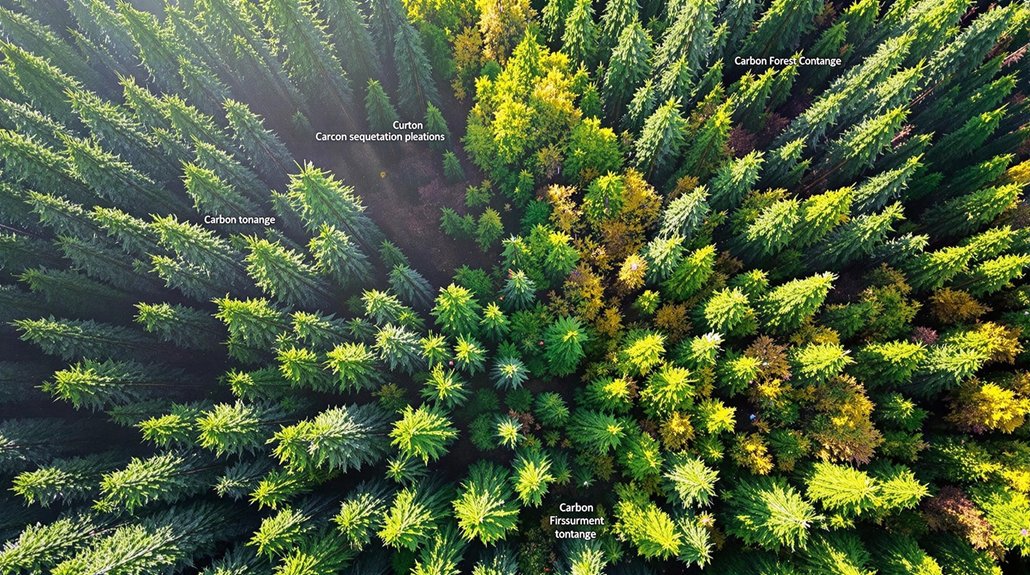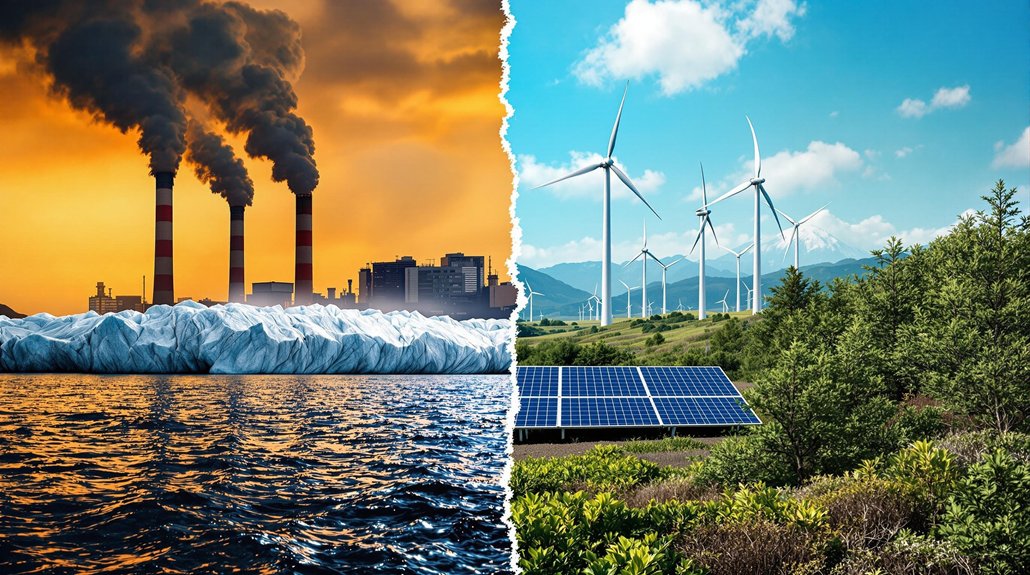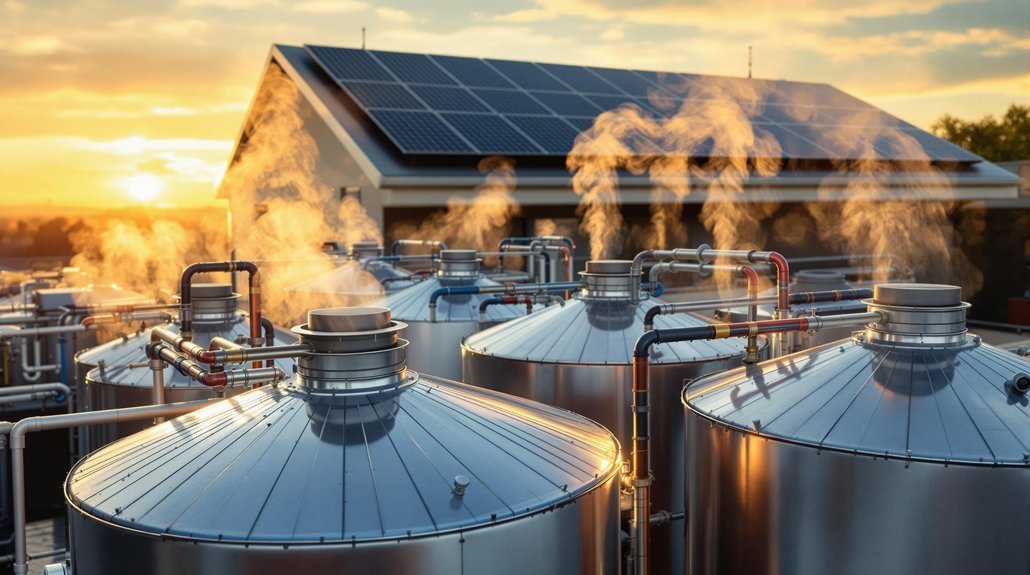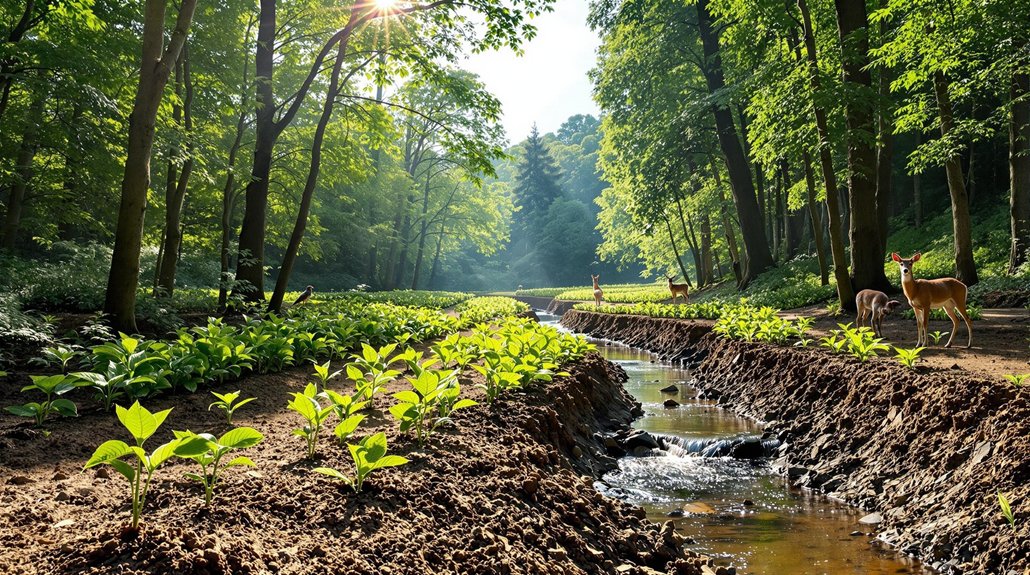Recent innovations are making renewable energy more sustainable. Companies now recycle solar panels and create bird-friendly wind turbines. Fish-friendly hydropower systems protect aquatic life. Waste-to-energy plants convert garbage into power, reducing landfill use. Closed-loop geothermal technology prevents groundwater depletion. Smart grids optimize energy distribution. These advances balance environmental protection with energy needs. The path to truly sustainable renewables continues to evolve with each technological breakthrough.
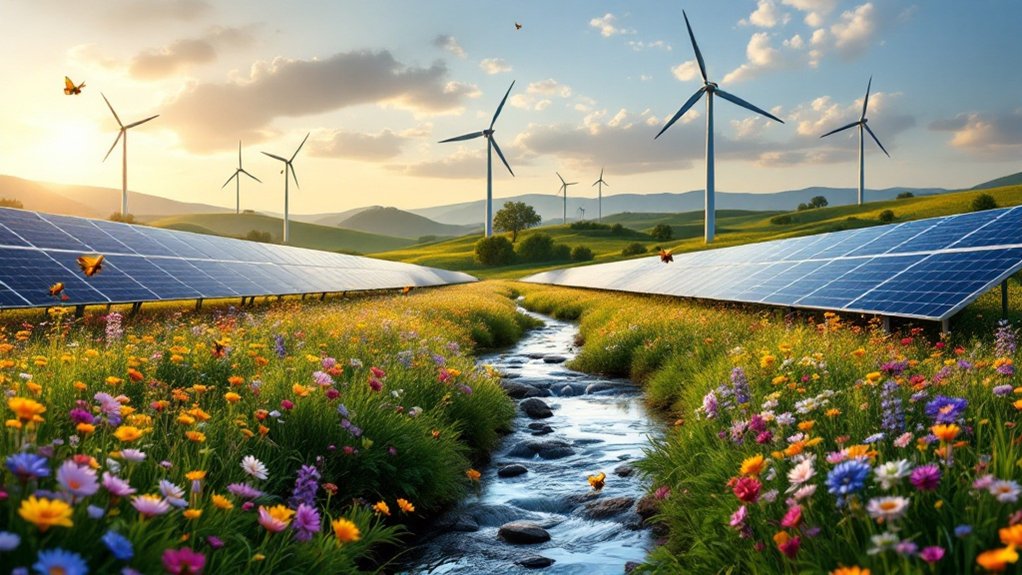
As the world faces increasing climate challenges, sustainable renewable resources are becoming essential for meeting global energy needs. Energy companies are working to make these technologies more environmentally friendly while maintaining their efficiency.
Innovations in solar energy include recycling programs for panels and increased efficiency that produces more power from the same amount of sunlight. Some solar farms now share land with wildlife habitats, protecting biodiversity while generating electricity.
Today’s solar technology works harder while treading lighter, turning sunlight into power without sacrificing our natural world.
Wind power technology has improved to address environmental concerns. New turbines use radar-activated lighting to reduce bird collisions, while floating offshore installations minimize impact on the seabed. Companies are developing recyclable turbine blades to solve disposal problems. The industry is also creating low-noise designs that decrease wildlife disturbance.
Hydropower plants now often include fish-friendly turbines to protect aquatic life. Run-of-river systems maintain natural water flow, unlike traditional dams. Engineers are modernizing existing dams to improve efficiency rather than building new ones. Small-scale hydro projects offer power with reduced environmental impact. The reliability of hydropower makes it a cornerstone renewable source that complements more intermittent technologies like wind and solar.
Biomass energy utilizes organic materials while addressing waste issues. Waste-to-energy plants reduce landfill usage, while biogas from animal waste captures methane that would otherwise enter the atmosphere. Algae-based biofuels don’t compete with food crops, making them more sustainable than first-generation biofuels.
Geothermal energy is expanding with closed-loop systems that prevent groundwater depletion. Enhanced geothermal technology taps heat in non-volcanic areas, expanding where this resource can be used. Even buildings benefit from geothermal heat pumps that reduce energy consumption. The heat from Earth’s core provides a consistent energy source that operates regardless of weather conditions.
Tidal and wave energy capture power from oceans with minimal disruption. Underwater turbines generate electricity while staying out of sight, and artificial tidal lagoons can create new habitats for marine life. The systematic review of these technologies shows they provide sustainable alternatives to fossil fuels with minimal environmental impact.
Connecting these technologies, smart grids optimize renewable energy integration while energy storage systems balance supply fluctuations. Green hydrogen production stores excess energy for later use.
These innovations are making renewable resources truly sustainable for the future.
Frequently Asked Questions
How Do Renewable Resources Impact Local Wildlife Populations?
Renewable energy facilities impact wildlife in several ways. Wind turbines kill birds and bats through collisions.
Solar farms clear habitats, displacing species like desert tortoises. Hydroelectric dams block fish migration routes.
Wildlife behaviors change due to noise, vibration, and artificial lighting.
However, proper siting on disturbed lands, creating wildlife corridors, and curtailing operations during migrations can reduce these impacts. Some sites even provide new habitat for pollinators.
What Are the Economic Tradeoffs for Transitioning to Renewable Resources?
Shifting to renewable resources involves clear economic tradeoffs. The upfront costs are high, requiring significant investments in infrastructure and technology.
However, long-term benefits include lower operating costs, stable energy prices, and new job creation. Some traditional energy jobs may disappear while clean tech industries grow.
Health cost savings from reduced pollution and climate change mitigation offer additional economic advantages, though energy prices may initially rise for consumers.
Can Developing Countries Afford Large-Scale Renewable Energy Implementation?
Developing countries face significant challenges in affording renewable energy. With less than 5% of global investments reaching them and high upfront costs, many struggle financially.
However, solutions exist. International funding, innovative financing models like pay-as-you-go systems, and loan guarantees can help overcome barriers.
The shift offers long-term benefits including job creation, energy independence, and reduced electricity costs as technology improves.
How Do Supply Chain Issues Affect Renewable Resource Development?
Supply chain issues severely limit renewable energy growth.
Raw material shortages, like polysilicon and lithium, drive up costs.
China’s dominance in manufacturing creates bottlenecks when disruptions occur.
Shipping delays and port congestion slow equipment delivery.
Pandemic-related factory closures worsened these problems.
Tariffs and trade tensions between major economies further complicate access to key components.
These challenges delay projects and increase renewable energy prices for consumers.
Which Renewable Technologies Have the Smallest Environmental Footprint?
Based on environmental metrics, wind energy typically has the smallest footprint, emitting just 11g CO2/kWh over its lifetime.
While wind farms use large land areas, about 95% remains available for other purposes.
Geothermal power also performs well with a compact land footprint of 1-8 acres per MW.
Hydropower, despite low emissions of 24g CO2/kWh, creates significant ecological disruption through reservoir flooding and river ecosystem changes.
